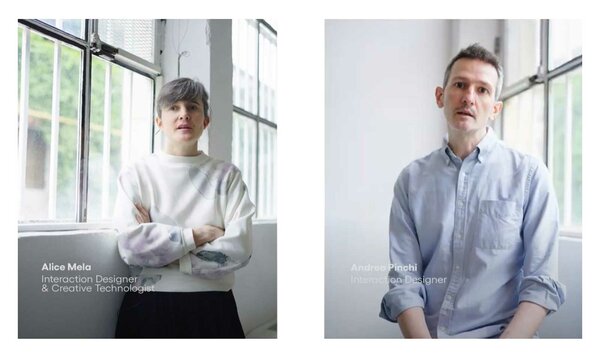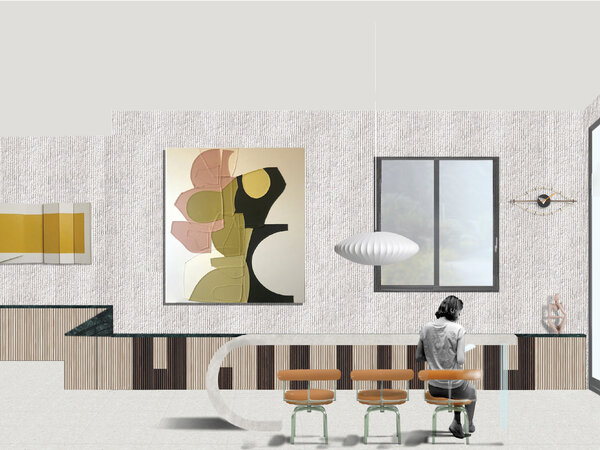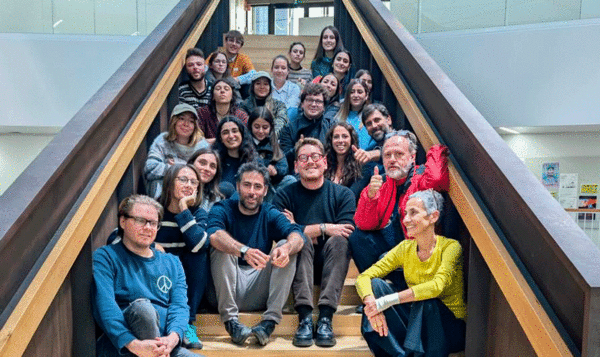
Interaction Design
Crafting tomorrow’s experiences
ENG
Language
English
Start date
October 2025
Frequency
Full time
Fruition
On campus
Duration
2 Years
Credits
120
Course Coordination
Alice Mela, Andrea Pinchi
How might we empower communities to address systemic issues through technology by leveraging interaction design methodologies and fostering inclusive participation?
In a world where everything is ever more interconnected, interaction design works as a catalyst for creating new and more accessible digital experiences where user and context diversity is regarded as key, blending breakthrough technologies together in a more responsible way.
The Master of Arts in Interaction design. Crafting tomorrow’s experiences is about interpreting and designing new human interactions with the environment and technology. This approach fits into the vision of DesignXCommons, where design is regarded to integrate the commons and regenerate the planet.
Issued Degree:
Diploma Accademico di Secondo Livello (DASL), corresponding to a Master of Arts Degree (MA) – EQF7 Level (European Qualification Framework).
Credits:
The course awards 120 CFA (Academic Formative Credits), corresponding to 120 ECTS (European Credit Transfer and Accumulation System).
* This course is undergoing approval by MUR - Ministry of University and Research – for the academic year 2024-25. The information on this page will be updated once the approval process has been completed.
Information to decide
in order to understand how digital transformation can be strategically and sustainably applied to design, the development of interfaces and devices - whether tangible or intangible - is achieved using an interdisciplinary, experimental approach, where technology itself is seen as a key tool for creating socially, culturally, environmentally and economically meaningful interactions. Crossing disciplinary fields such as user experience, ethnographic studies, generative AI, digital sociology, and creative coding are likely to empower technical design skills and promote the development of independent critical thinking skills, thus allowing designers to engage with complex problems, make full use of breakthrough technologies and respond to rapidly changing needs of society. All this in turn contributes to building new connections and forms of experience. As part of lab-based design learning sessions, partnerships with companies and businesses in the industry will provide first-hand experience of what has been learned in the course. With its valuable industrial and technological background, the city of Turin has long been providing the groundwork for the European Interaction Design arena, emerging as a key player in a co-design process that looks towards industry excellence and innovation.
Career roles that can be pursued with the degree programme in Interactive Design. Crafting tomorrow’s experiences will be able to work hands-on with technology in the area of Building Automation, focusing on technology applications to improve the quality of living; IoT (Internet of Things), exploring the digital identity of networked products and environments; Edtech, developing multimedia devices for education; Service Design, understanding user behaviours and needs to develop user-friendly services; Digital Product Design, developing interfaces and the way users interact with them; Design of digital services and products for public institutions. Continuing in Ph.D. trajectories at Italian and foreign universities will also be an option.
The main software you will need during your course is provided by IED!
On this page you will find all the features you need for your computer.
Faculty
What people say

Interaction Design. Crafting tomorrow’s experiences
Course Coordinators describe the goal, the methodology and the professional opportunities of the Master of Arts in Interior Design.
DesignXCommons
























